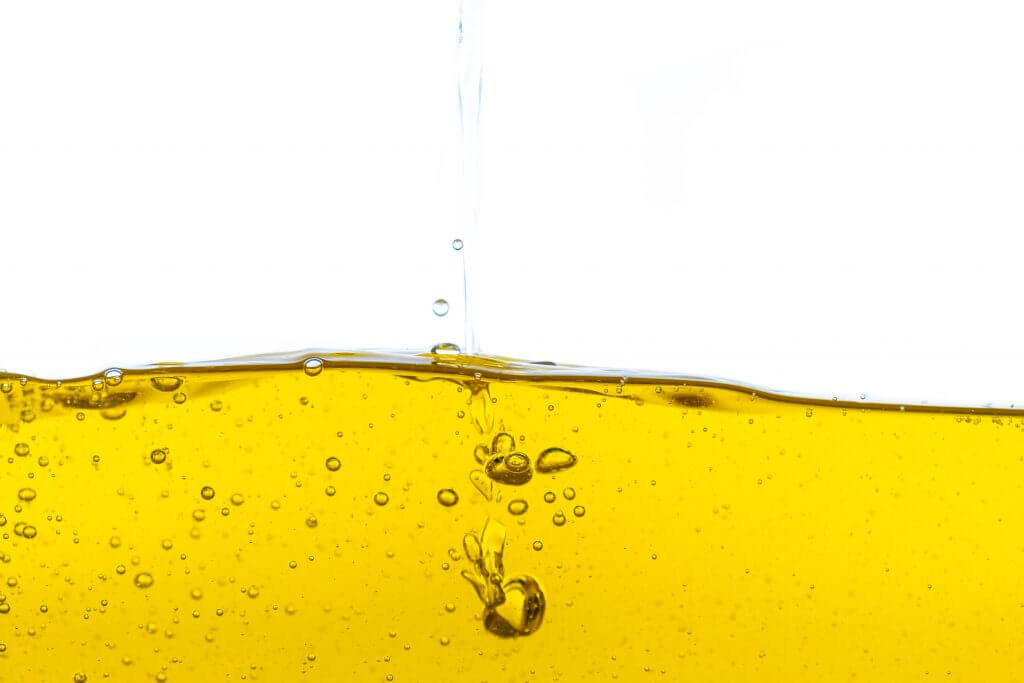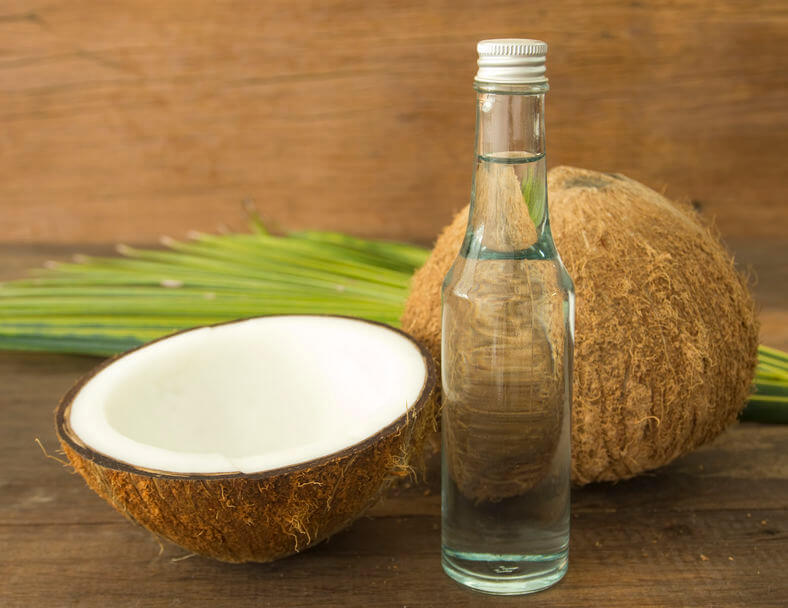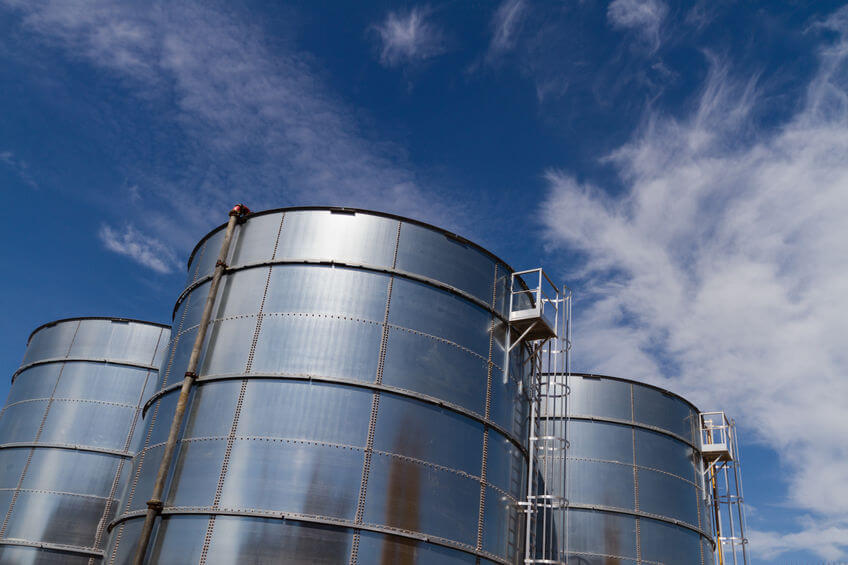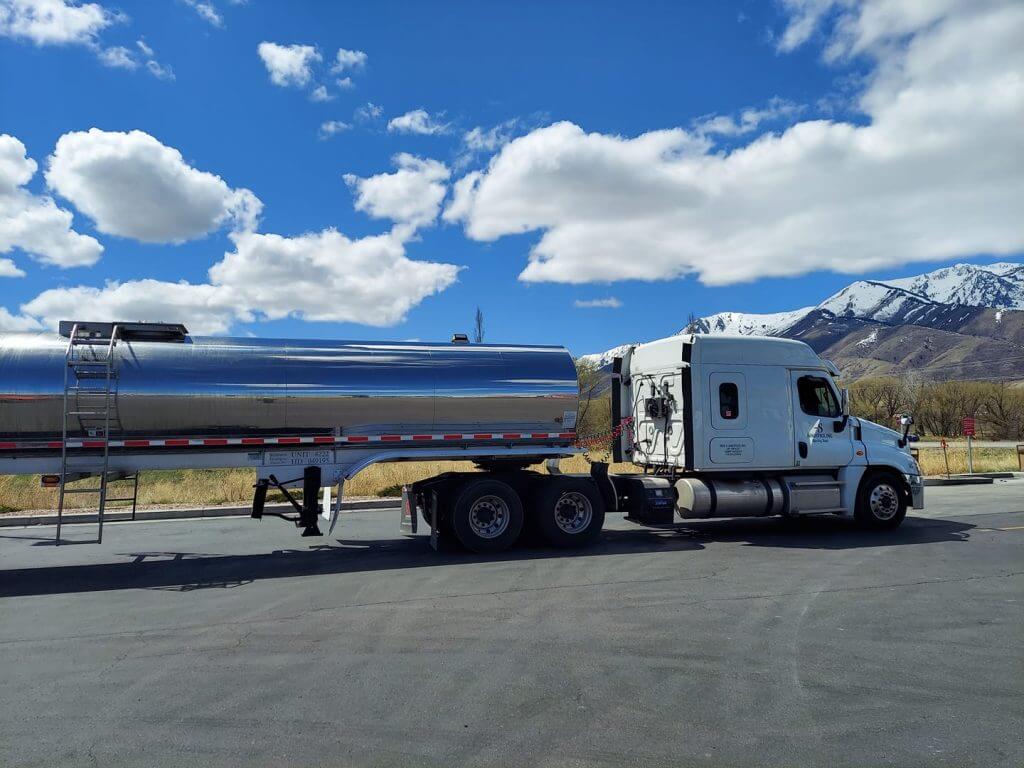
What are Fats and Oils?
Fats and oils are substances that comprise molecules we call triglycerides. These triglycerides are made up of three fatty acid units which are linked to glycerol. If you don’t understand that definition, don’t bother (especially if you aren’t studying for an exam😉). Here’s a simpler definition of fats and oils:
Fats and oils are organic compounds that supply your body with essential fats and calories which aid in your body’s absorption of some vitamins, such as vitamin A, D, E, and K. Fats and oils mostly mean the same thing, with the major difference between them being that fats are solid at room temperature while oils are liquid.
Types of Oils and Fats
There are various ways to classify fats and oils. You could classify them by their source or their saturation levels. In terms of saturation, oils and fats could be saturated, monounsaturated, or polyunsaturated. And the major sources of fats and oils are animals, fishes, and vegetables.
Animal fats are what we call oils from animals. Examples of animal fats are butterfat, lard, and tallow. A popular example of fish oils is cod liver oil. And examples of vegetable oils, the most common of the three, are palm oil, groundnut oil, canola oil, and cottonseed oil.
List of Fats and Oils
Here is a list of some of the most popular fats and oils:
- Animal fats
The most common examples of animal fats are butterfat, lard, and tallow. Butterfat is gotten from cow milk. This fat is rich in vitamin E, but it’s more popular because of its yellow color. Butterfat can be used as a table spread, but its use is no longer common. It is being replaced by margarine due to health factors and margarine’s inexpensiveness. However, it is not uncommon to find butterfat in some dairy products, such as ice cream, milk, coffee cream, whipping cream, and cheese. Tallow, another example of animal fat, is gotten from beef cattle while lard is gotten from a pig’s fatty tissues.
- Coconut oil
Coconut oil is gotten from copra, the dried coconut meat on the coconut tree. This oil is solid at room temperature and has a very high amount of lauric acid, more than any other oil. And because of its high saturated fatty acid content (90%), coconut oil does not readily oxidize under normal conditions. Its low molecular weight also makes it more susceptible to foaming and reluctant to mix with other oils.
The ease of digestion of coconut oil makes it a reliable oil for sports and infant foods. You can also use coconut oil as a non-dairy creamer and as a frying oil.
- Corn oil
The source of corn oil is maize germ. It is also rich in polyunsaturated fatty acid but with low levels of linolenic acid. One of the best things about corn oil is its pleasant flavor. And because it doesn’t smoke easily, it makes a suitable oil for deep frying. But apart from its culinary uses, corn oil has useful applications in industries, pharmaceuticals, and cosmetics.
- Olive oil
We get olive oil from olives, the fruits of the olive tree, with the olives being pressed to squeeze out the oil. The most popular use of this oil is for cooking and frying. But apart from these, olive oil is also used in cosmetics, soaps, pharmaceuticals, and even as fuels in some oil lamps. The major composition of olive oil is oleic acid. And extra virgin oil, the purest form of olive oil, has a good number of health benefits that make it most suitable for culinary purposes.
- Palm oil
Palm oil was one of the most globally produced oil crops in 2014. This oil is so widely used that its use has led to some environmental concerns, as forests in some countries were cleared to create space for growing oil palm. Despite these environmental concerns, however, palm oil remains one of the most widely used oils.
This edible vegetable oil is obtained from the reddish pulp of oil palm fruits. And its areas of application are in beauty products manufacturing, food manufacturing, and as biofuel. Palm oil is also used in some places for wound care.
- Peanut oil
Other names for peanut oil are groundnut oil and arachis oil. The neutral-flavored oil is gotten from peanuts. However, its aroma and flavor can be strengthened when the oil is gotten from roasted peanuts. This roasted peanut-derived oil is then preferred for cooking purposes where its flavor is needed. Other uses of groundnut oil are as massage oil and in the making of soap.
- Rice bran oil
The source of rice bran oil is rice husk, the hard outer layer of rice. This oil is a popular cooking oil in East Asian countries, Japan, Malaysia, Nepal, and some other countries. Thanks to its high smoke point and light flavor, rice bran oil is well suited for high-temperature cooking. Another popular area of application of rice bran oil is in the making of rice bran wax. This rice bran wax can then be used as an alternative to carnauba wax in polishing compounds, cosmetics, shoe creams, and confectionery.
- Soybean oil
The seeds of soybean produce soybean oil, one of the most widely used cooking oils globally. Although the most popular use of soybean is in the kitchen, the oil finds usefulness in other industrial areas. The residue from the process of extracting oil from the seeds does not go to waste, as it can also be used as animal feed.
Shipping Edible Oils and Fats

The shipping of oils and fats can be quite tricky. It’s quite easy to order and get a few bottles of any vegetable oil. But things get a little more complicated when you have to transport more. There are challenges you have to avoid, some safety standards you have to keep up with, and a lot of planning to do. The goal isn’t just to transport the oils and fats to their destinations, but also to deliver them in the safest and best conditions possible. So, how do you ship edible oils and fats?
It all depends on the intended use and quantity you plan to transport. Generally, you can transport oils in bottles, barrels, or in bulk. The bottles are best for personal use or retail sales. But imagine you owned a big restaurant, buying oils in bottles wouldn’t be your smartest money decision. So, you may go for the barrels. A van can handle any of these two for you.
But if you need the oil for industrial purposes, your best bet is with bulk transport. And it is in this bulk transport that things get very tricky. Because then, you would need more than a van. You would need edible oil tankers. And you would need to consider some factors, such as temperature, deterioration risks, storage designs, choosing a suitable freight partner, and so much more.
How to Ship Oils and Fats in Bulk
Before drawing any design plan for the storage tank where you intend to keep your oil or making any transportation plan, there are some factors you need to consider. We call them deterioration risks.
Bulk Oils and Fats Deterioration Risks
There are three major deterioration risks you have to consider before attempting to store or transport edible oils and fats. After considering them and putting measures in place to tackle them, you can then proceed with other plans.
- Oxidation
Oxidation can be a major problem from vegetable oils, and it happens when the oils come in contact with oxygen in the air. Leave oils to oxidate and you would be struggling with major quality downgrade as a result of chemical anomalies. Even when you try to resolve this issue, it costs a lot of money.
- Hydrolysis
It is always important to store oil in clean tanks. Although hygiene is a very good reason to do this, hygiene would be the least of your problems when you allow your oil to hydrolyze. Hydrolysis breaks down the fats in the oil into fatty acids, rendering the organic compound completely useless for any cooking purpose.
- Contamination
The oil in a tank also runs the risk of being contaminated when the previous content of the tank was not properly cleaned before loading the oil. And as far as contamination is concerned, there are a lot of opportunities for it to happen. It could happen during the loading or unloading of the oil from the tanker into the tank or anywhere else.
Storage and Transport Tank Designs for Shipping Oils and Fats

Now that we know the three quality-threatening, expense-consuming deterioration risks that we have to avoid, we can now decide which tanks and transport systems are best to ship these precious cooking liquids.
- Land storage tanks
These are the large circular tanks that you often find in industries. They are preferred for their effectiveness in storing oil while keeping their content safe from water, air, or any other source of contamination. Land storage tanks are often cylindrical with dome-shaped tops and sloped bottoms. Their sloped bottoms make it easy to drain the tanks.
- Ship tanks
As far as the bulk transport of oil is concerned, ship tanks are one of the most efficient options. The capacities of ship tanks often range from 200 tonnes to about 2500 tonnes. And with this capacity, a single vessel is usually dedicated to transporting them from place to place.
- Rail and road tanks
These are the tanks we use to transport the oils on land. They are also made of mild steel, or in some cases, stainless steel. Other storage and transport container options for transporting oil include bulk tankers, parcel tankers, coasters, and container vessels.
- Choice of materials
The choice of materials used in building the tanks and other equipment that’ll come in contact with the oil cargo must also be carefully considered. For instance, all of these materials must be inert to substances like oils and fats, and they must also be cleared for use in food processing. This is the reason stainless steel is preferred as the construction material for tanks that hold sensitive substances like oils and fats.
Another construction material option is mild steel. The complication with mild steel is that they have to be properly coated with a protective coating. Otherwise, the body could corrode and contaminate the oils. Also, the protective coating has to have been approved to be safe for coming in contact with edibles.
In addition, copper and its alloys should not come in contact with the oils and fats at any stage or during any process.
Other Factors to Consider
Some other factors that you should implement in designing your storage or transport tank for edible oils include:
- Heating
The installation of heating systems in the tanks (storage or transport) is non-negotiable because of the differing nature of oils. Some oils are quick to turn to fat when their temperature falls close to room temperature. Imagine how frustrating it would be to load and unload solidified oil. Also, the heating coils on the heating system must be made of stainless steel.
- Maintenance
An edible oil transport or storage facility must be maintained regularly and effectively. This maintenance routine should involve checking steam supply pipelines, steam pressure valves, tank coatings, gauge meters, and weighing equipment. Without having these regular checks in place, it might be hard to guarantee the integrity and quality sustenance of bulk oils in the facilities.
- Cleaning
This factor is put in place to tackle any form of contamination of bulk oils and maintain their qualities. Some measures to take here include making sure that edible and non-edible oils are not even mixed. And when steam, water, or any other chemical is used to clean the tank, it should be completely drained to avoid hydrolysis.
Challenges of Shipping Bulk Oils and Fats
Even when you have every transport measure nailed down and ready, there are still some challenges you may need to be on the lookout for. Not taking these challenges into account could undermine all your efforts and lose your company a lot of money. Some challenges of shipping bulk oils and fats include:
- Condition of the Oils and Fats Before Transport
Some oils and fats are not refined until they get to their final destination. The reason for this is that refined edible oils are more susceptible to loss of quality during transit. And as a result, the shippers prefer to have the oils in crude forms so that they can refine them to meet their specifications. However, the rate of transport of refined edible oils has been on the rise in recent times.
- Acceptable and Banned Immediate Previous Cargoes
Oils and fats are used globally, but not all countries produce these liquids. So, there is the need to ship the oils in bulk from the producer countries to the user countries. As a result, user countries may not have tanks dedicated to the shipping of oil cargoes alone. The challenge here arises when these tanks have previously shipped some chemical cargo that could affect the integrity of the oil cargoes.
To tackle this challenge, FOSFA International has lists of acceptable and banned immediate previous cargoes. FOSFA is the Federation of Oils, Seeds, and Fats Associations, and the body overlooks everything that concerns the international trade of all sorts of oils and fats.
The acceptable immediate previous cargoes do not expose the oil cargoes to significant risks of contamination. But the banned immediate previous cargoes are banned because they could be toxic or carcinogenic. And sometimes, these bans span across two to three cargoes before the edible oil cargo transportation.
- Edible Oils and Fats Contracts
The transport of bulk edible oils and fats involves drawing up contracts that contain details of the oils being transported. Some details include the specific oil being shipped, the agreed quantities and specifications being shipped, analytical properties of the cargo at loading and unloading, standards for the shipping tanks, and many more. These contracts are there to ensure that there is an efficient, effective, and risk-free transport of the bulk oils from the supplier to the receiver.
But because there are a lot of oils that could be possibly shipped, and each has varying properties that make a generic contract impossible, there has to be a contract for each oil. And this is why FOSFA has a long list of contract templates that can be used for any edible oils and fats being transported.
- Shipping and Storage Conditions
The shipping and storage conditions of edible oils and fats could also pose a challenge to the transport of these cooking oils. As mentioned earlier, proper tank coatings, spotless cleaning, and equipping the tanks to sustain the quality of the oils are important factors to never compromise.
- Edible Oils and Fats Cargo Maintenance
Thanks to the vastly varying properties of the various oils and fats, a standardized edible oils and fats cargo maintenance system can’t work. For instance, oils like coconut and palm oils are quick to turn to fat in ambient temperatures. Castor oil, though maintaining its liquid state in ambient temperature, requires heating before efficient uploading is possible. These oils require heating. But at the same time, the heating has to be done slowly and steadily. Rapid heating could lead to the increase of the acid value of the oils, ultimately leading to the deterioration of the oils.
These non-standardized shipping and storage conditions have prompted the United Nations Food and Agriculture Organization (FAO) to release a temperature regime for the transport, storage, loading, and discharging of bulk edible oils and fats.
Temperatures during storage, transport, loading, and discharge.
| Storage and bulk shipments | Loading and discharge | |||
| Oil or Fat | Min °C | Max °C | Min °C | Min °C |
| Castor oil | 20 | 25 | 30 | 3 |
| Coconut oil | 27 | 32 | 40 | 45 |
| Cottonseed oil | Ambient | Ambient | 20 | 25 (3) |
| Fish oil | 20 | 25 | 25 | 30 |
| Grapeseed oil | Ambient | Ambient | 15 | 20 (3) |
| Groundnut oil | Ambient | Ambient | 20 | 25 (3) |
| Hydrogenated oils | Various | – (1) | ||
| Illipe butter | 38 | 41 | 50 | 55 |
| Lard | 40 | 45 | 50 | 55 |
| Linseed oil | Ambient | Ambient | 15 | 20 (3) |
| Maize (corn) oil | Ambient | Ambient | 15 | 20 (3) |
| Olive oil | Ambient | Ambient | 15 | 20 (3) |
| Palm oil | 32 | 40 | 50 | 55 |
| Palm olein | 25 | 30 | 32 | 35 |
| Palm stearin | 40 | 45 | 60 | 70 (2) |
| Palm kernel oil | 27 | 32 | 40 | 45 |
| Palm kernel olein | 25 | 30 | 30 | 35 |
| Palm kernel stearin | 32 | 38 | 40 | 45 |
| Rapeseed/low erucic acid rapeseed oil | Ambient | Ambient | 15 | 20 (3) |
| Safflower oil | Ambient | Ambient | 15 | 20 (3) |
| Sesame oil | Ambient | Ambient | 15 | 20 (3) |
| Sheanut butter | 38 | 41 | 50 | 55 |
| Soybean oil | Ambient | Ambient | 20 | 25 (3) |
| Sunflower oil | Ambient | Ambient | 15 | 20 (3) |
| Tallow | 45 | 55 | 55 | 65 |
- Bulk Oils and Fats Cargo Damage
The damage of bulk oils and fats cargos is always something to be wary of during transit. The damage could be caused by the poor temperature management of the oils and fats, hydrolysis, or contamination. Other possible causes include adulteration, which involves the deliberate mixing of low-quality oils to mimic the properties of a more expensive oil; and admixture where two bulk oils being transported on the same ship must come in contact with each other.
Shipping Your Bulk Oils, Fats & Tallow With Total Connection

Total Connection logistics company is all about servicing your logistics needs when you need them and just how you need them. With well over two decades of experience shipping all sorts of bulk chemical cargo, we have optimized our logistics system for food-grade transportation. And when you ship your cargo with us, we offer you flexible services that aren’t generic, but tailor-made for the specific needs of your company, and at the most reasonably affordable costs.
Irrespective of what your company wants, be it shipping of corn oil in bulk, bulk transport olive oil, or any other food shipping needs, Total Connection has got you covered. Some of the bulk foods and edible oils and fats we regularly transport at Total Connection include:
- Animal oils
- Coconut oil
- Corn oil
- Olive oil
- Palm oil
- Peanut oil
- Rice bran oil
- Soya bean oil
- Sugar syrup
- Sweeteners
- Syrup concentrate
- Vegetable oil
And the first step you need to take to set up your bulk food or oil and fats transport is by filling out the brief quote form below. We’ll take it from there.
